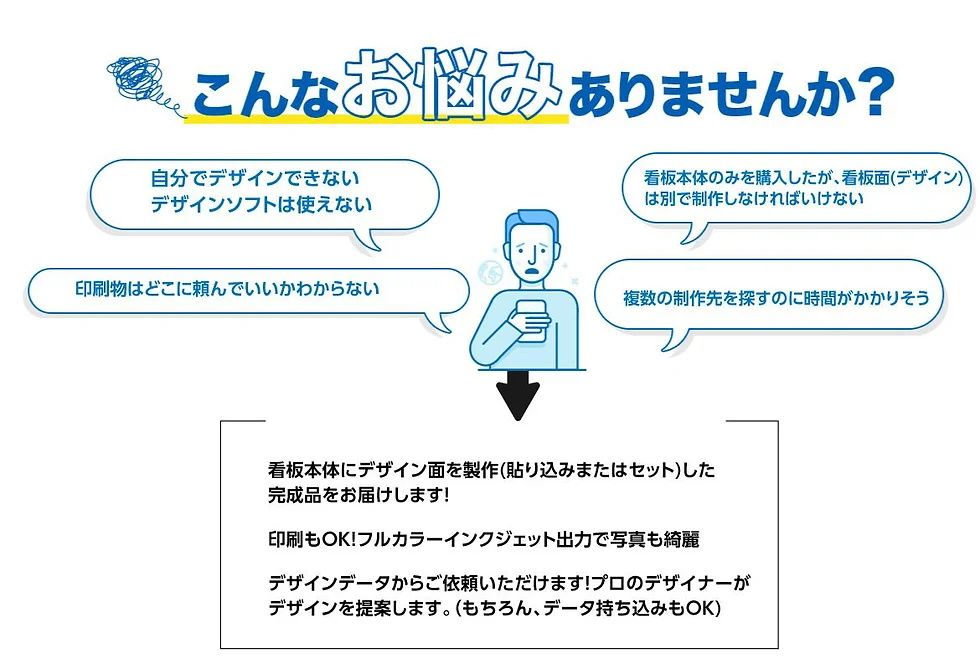Q&A: Can Neuro-Symbolic AI Solve AIs Weaknesses?
By the mid-1960s neither useful natural language translation systems nor autonomous tanks had been created, and a dramatic backlash set in. Each AMR encapsulates the meaning of the question using terminology independent of the knowledge graph, a crucial feature enabling the technology’s application across various tasks and knowledge bases. Symbolic AI works by using symbols to represent objects and concepts, and rules to represent relationships between them. These rules can be used to make inferences, solve problems, and understand complex concepts. Symbolic AI algorithms are designed to solve problems by reasoning about symbols and relationships between symbols.
A deep net, modeled after the networks of neurons in our brains, is made of layers of artificial neurons, or nodes, with each layer receiving inputs from the previous layer and sending outputs to the next one. Information about the world is encoded in the strength of the connections between nodes, not as symbols that humans can understand. While these advancements mark significant steps towards replicating human reasoning skills, current iterations of Neuro-symbolic AI systems still fall short of being able to solve more advanced and abstract mathematical problems.
The symbolic part of the AI has a small knowledge base about some limited aspects of the world and the actions that would be dangerous given some state of the world. They use this to constrain the actions of the deep net — preventing it, say, from crashing into an object. In other scenarios, such as an e-commerce shopping assistant, we can leverage product metadata and frequently asked questions to provide the language model with the appropriate information for interacting with the end user. Whether we opt for fine-tuning, in-context feeding, or a blend of both, the true competitive advantage will not lie in the language model but in the data and its ontology (or shared vocabulary). In one of my latest experiments, I used Bard (based on PaLM 2) to analyze the semantic markup of a webpage.
Over the next few decades, research dollars flowed into symbolic methods used in expert systems, knowledge representation, game playing and logical reasoning. However, interest in all AI faded in the late 1980s as AI hype failed to translate into meaningful business value. Symbolic AI emerged again in the mid-1990s with innovations in machine learning techniques that could automate the training of symbolic systems, such as hidden Markov models, Bayesian networks, fuzzy logic and decision tree learning.
Knowledge graph embedding (KGE) is a machine learning task of learning a latent, continuous vector space representation of the nodes and edges in a knowledge graph (KG) that preserves their semantic meaning. This learned embedding representation of prior knowledge can be applied to and benefit a wide variety of neuro-symbolic AI tasks. One task of particular importance is known as knowledge completion (i.e., link prediction) which has the objective of inferring new knowledge, or facts, based on existing KG structure and semantics. Overall, LNNs is an important component of neuro-symbolic AI, as they provide a way to integrate the strengths of both neural networks and symbolic reasoning in a single, hybrid architecture. Deep learning and neural networks excel at exactly the tasks that symbolic AI struggles with. They have created a revolution in computer vision applications such as facial recognition and cancer detection.
What is Symbolic AI – Delve into the realm of Symbolic AI
So far, we have defined what we mean by Symbolic AI and discussed the underlying fundamentals to understand how Symbolic AI works under the hood. In the next section of this chapter, we will discuss the major pitfalls and challenges of Symbolic AI that ultimately led to its downfall. For a logical expression to be TRUE, its resultant value must be greater than or equal to 1.
This article helps you to understand everything regarding Neuro Symbolic AI. Complex problem solving through coupling of deep learning and symbolic components. Coupled neuro-symbolic systems are increasingly used to solve complex problems such as game playing or scene, word, sentence interpretation.
What are the benefits of symbolic AI?
Our solution, meticulously crafted from extensive clinical records, embodies a groundbreaking advancement in healthcare analytics. Symbolic AI algorithms are able to solve problems that are too difficult for traditional AI algorithms. In response to these challenges, recent advancements in Symbolic AI have focused on integrating machine learning techniques to automate knowledge acquisition and enhance the system’s ability to learn and adapt. This article aims to demystify Symbolic AI, a branch of artificial intelligence that promises not just advancements in technology but strides towards transparency and trust in AI systems. A manually exhaustive process that tends to be rather complex to capture and define all symbolic rules.
However, the future of AI with Neuro-Symbolic AI looks promising as researchers continue to explore and innovate in this space. The potential of Neuro-Symbolic AI in advancing AI capabilities and adaptability is immense, and we can expect to see more breakthroughs in the near future. Another example of symbolic AI can be seen in rule-based system like a chess game. The AI uses predefined rules and logic (e.g., if the opponent’s queen is threatening the king, then move king to a safe position) to make decisions.
The potential for Neuro-Symbolic AI to enhance AI capabilities and adaptability is vast, and further breakthroughs are anticipated in the foreseeable future. Despite these limitations, symbolic AI has been successful in a number of domains, such as expert systems, natural language processing, and computer vision. Symbolic AI, with its deep roots in logic and explicit reasoning, continues to evolve, pushing the boundaries of AI’s capabilities in understanding, reasoning, and interacting with the world.
What are some examples of Symbolic AI in use today?
Since some of the weaknesses of neural nets are the strengths of symbolic AI and vice versa, neurosymbolic AI would seem to offer a powerful new way forward. Roughly speaking, the hybrid uses deep nets to replace humans in building the knowledge base and propositions that symbolic AI relies on. It harnesses the power of deep nets to learn about the world from raw data and then uses the symbolic components to reason about it. To build AI that can do this, some researchers are hybridizing deep nets with what the research community calls “good old-fashioned artificial intelligence,” otherwise known as symbolic AI.
What is symbolic AI with example?
Symbolic AI has been applied in various fields, including natural language processing, expert systems, and robotics. Some specific examples include: Siri and other digital assistants use Symbolic AI to understand natural language and provide responses.
We will finally discuss the main challenges when developing Symbolic AI systems and understand their significant pitfalls. One of their projects involves technology that could be used for self-driving cars. Consequently, learning to drive safely requires enormous amounts of training data, and the AI cannot be trained out in the real world. This video shows a more sophisticated challenge, called CLEVRER, in which artificial intelligences had to answer questions about video sequences showing objects in motion.
Creating personalized content demands a wide range of data, starting with training data. To fine-tune a model, we need high-quality content and data points that can be utilized within a prompt. Each prompt should comprise a set of attributes and completion that we can rely on.
In finance, it can analyze transactions within the context of evolving regulations to detect fraud and ensure compliance. AllegroGraph is a horizontally distributed Knowledge Graph Platform that supports multi-modal Graph (RDF), Vector, and Document (JSON, JSON-LD) storage. It is equipped with capabilities such as SPARQL, Geospatial, Temporal, Social Networking, Text Analytics, and Large Language Model (LLM) functionalities. These features enable scalable Knowledge Graphs, which are essential for building Neuro-Symbolic AI applications that require complex data analysis and integration. These are just a few examples, and the potential applications of neuro-symbolic AI are constantly expanding as the field of AI continues to evolve. One solution is to take pictures of your cat from different angles and create new rules for your application to compare each input against all those images.
It is about finding the correct prompt while dealing with hundreds of possible variations. The effectiveness of symbolic ai is also contingent on the quality of human input. The systems depend on accurate and comprehensive knowledge; any deficiencies in this data can lead to subpar AI performance. You can foun additiona information about ai customer service and artificial intelligence and NLP. It follows that neuro-symbolic AI combines neural/sub-symbolic methods with knowledge/symbolic methods to improve scalability, efficiency, and explainability. While these two approaches have their respective strengths and applications, the gap between them has long been a source of debate and challenge within the AI community. The goal of bridging this gap has become increasingly important as the complexity of real-world problems and the demand for more advanced AI systems continue to grow.
This lead towards the connectionist paradigm of AI, also called non-symbolic AI which gave rise to learning and neural network-based approaches to solve AI. The difficulties encountered by symbolic AI have, however, been deep, possibly unresolvable ones. One difficult problem encountered by symbolic AI pioneers came to be known as the common sense knowledge problem. In addition, areas that rely on procedural or implicit knowledge such as sensory/motor processes, are much more difficult to handle within the Symbolic AI framework.
Next-Gen AI Integrates Logic And Learning: 5 Things To Know – Forbes
Next-Gen AI Integrates Logic And Learning: 5 Things To Know.
Posted: Fri, 31 May 2024 07:00:00 GMT [source]
As such, initial input symbolic representations lie entirely in the developer’s mind, making the developer crucial. Recall the example we mentioned in Chapter 1 regarding the population of the United States. It can be answered in various ways, for instance, less than the population of India or more than 1.
Neuro-Symbolic AI aims to create models that can understand and manipulate symbols, which represent entities, relationships, and abstractions, much like the human mind. These models are adept at tasks that require deep understanding and reasoning, such as natural language processing, complex decision-making, and problemsolving. The work in AI started by projects like the General Problem Solver and other rule-based reasoning systems like Logic Theorist became the foundation for almost 40 years of research. Symbolic AI (or Classical AI) is the branch of artificial intelligence research that concerns itself with attempting to explicitly represent human knowledge in a declarative form (i.e. facts and rules). If such an approach is to be successful in producing human-like intelligence then it is necessary to translate often implicit or procedural knowledge possessed by humans into an explicit form using symbols and rules for their manipulation. Artificial systems mimicking human expertise such as Expert Systems are emerging in a variety of fields that constitute narrow but deep knowledge domains.
In this case, each network is trained to examine an image and identify an object and its properties such as color, shape and type (metallic or rubber). Armed with its knowledge base and propositions, symbolic AI employs an inference engine, which uses rules of logic to answer queries. Asked if the sphere and cube are similar, it will answer “No” (because they are not of the same size or color). In Layman’s terms, this implies that by employing semantically rich data, we can monitor and validate the predictions of large language models while ensuring consistency with our brand values. Google hasn’t stopped investing in its knowledge graph since it introduced Bard and its generative AI Search Experience, quite the opposite. When creating semantically related links on e-commerce websites, we first query the knowledge graph to get all the candidates (semantic recommendations).
For example, an LNN can use its neural component to process perceptual input and its symbolic component to perform logical inference and planning based on a structured knowledge base. And unlike symbolic AI, neural networks have no notion of symbols and hierarchical representation of knowledge. This limitation makes it very hard to apply neural networks to tasks that require logic and reasoning, such as science and high-school math. The advantage of neural networks is that they can deal with messy and unstructured data.
Is symbolic AI still used?
While deep learning and neural networks have garnered substantial attention, symbolic AI maintains relevance, particularly in domains that require transparent reasoning, rule-based decision-making, and structured knowledge representation.
The strengths of symbolic AI lie in its ability to handle complex, abstract, and rule-based problems, where the underlying logic and reasoning can be explicitly encoded. This approach has been successful in domains such as expert systems, planning, and natural language processing. For example, a Neuro-Symbolic AI system could learn to recognize objects in images (a task typically suited to neural networks) and also use symbolic reasoning to make inferences about those objects (a task typically suited to symbolic AI). This could enable more sophisticated AI applications, such as robots that can navigate complex environments or virtual assistants that can understand and respond to natural language queries in a more human-like way. On the other hand, Neural Networks are a type of machine learning inspired by the structure and function of the human brain. Neural networks use a vast network of interconnected nodes, called artificial neurons, to learn patterns in data and make predictions.
The team’s solution was about 88 percent accurate in answering descriptive questions, about 83 percent for predictive questions and about 74 percent for counterfactual queries, by one measure of accuracy. By combining these approaches, the AI facilitates secondary reasoning, allowing for more nuanced inferences. This secondary reasoning not only leads to superior decision-making but also generates decisions that are understandable and explainable to humans, marking a substantial advancement in the field of artificial intelligence.
Consequently, when creating Symbolic AI, several common-sense rules were being taken for granted and, as a result, excluded from the knowledge base. As one might also expect, common sense differs from person to person, making the process more tedious. Defining the knowledge base requires skills in the real world, and the result is often a complex and deeply nested set of logical expressions connected via several logical connectives. Compare the orange example (as depicted in Figure 2.2) with the movie use case; we can already start to appreciate the level of detail required to be captured by our logical statements. We must provide logical propositions to the machine that fully represent the problem we are trying to solve.
The knowledge base would also have a general rule that says that two objects are similar if they are of the same size or color or shape. In addition, the AI needs to know about propositions, which are statements that assert something is true or false, to tell the AI that, in some limited world, there’s a big, red cylinder, a big, blue cube and a small, red sphere. All of this is encoded as a symbolic program in a programming language a computer can understand. While neuro symbolic ideas date back to the early 2000’s, there have been significant advances in the last five years. The strengths of subsymbolic AI lie in its ability to handle complex, unstructured, and noisy data, such as images, speech, and natural language. This approach has been particularly successful in tasks like computer vision, speech recognition, and language understanding.
You can easily visualize the logic of rule-based programs, communicate them, and troubleshoot them. We know how it works out answers to queries, and it doesn’t require energy-intensive training. This aspect also saves time compared with GAI, as without the need for training, models can be up and running in minutes. Together, they built the General Problem Solver, which uses formal operators via state-space search using means-ends analysis (the principle which aims to reduce the distance between a project’s current state and its goal state).
- Symbolic AI, on the other hand, relies on explicit rules and logical reasoning to solve problems and represent knowledge using symbols and logic-based inference.
- Early deep learning systems focused on simple classification tasks like recognizing cats in videos or categorizing animals in images.
- The primary constituents of a neuro-symbolic AI system encompass the following.
- It extends propositional logic by replacing propositional letters with a more complex notion of proposition involving predicates and quantifiers.
- An orange should have a diameter of around 2.5 inches and fit into the palm of our hands.
By integrating neural learning’s adaptability with Chat GPT’s structured reasoning, we are moving towards AI that can understand the world and explain its understanding in a way that humans can comprehend and trust. Platforms like AllegroGraph play a pivotal role in this evolution, providing the tools needed to build the complex knowledge graphs at the heart of Neuro-Symbolic AI systems. As the field continues to grow, we can expect to see increasingly sophisticated AI applications that leverage the power of both neural networks and symbolic reasoning to tackle the world’s most complex problems. It must identify various objects such as cars, pedestrians, and traffic signs—a task ideally handled by neural networks. However, it also needs to make decisions based on these identifications and in accordance with traffic regulations—a task better suited for symbolic AI. These networks draw inspiration from the human brain, comprising layers of interconnected nodes, commonly called “neurons,” capable of learning from data.
It doesn’t learn from past games; instead, it follows the rules set by the programmers. Maybe in the future, we’ll invent AI technologies that can both reason and learn. But for the moment, symbolic AI is the leading method to deal with problems that require logical thinking and knowledge representation. OOP languages allow you to define classes, specify their properties, and organize them in hierarchies. You can create instances of these classes (called objects) and manipulate their properties.
On the left, we see the analysis in a zero-shot mode without external knowledge, and on the right, we see the same model with data injected in the prompt (in context learning). Returning from New York, where I attended the Knowledge Graph Conference, I had time to think introspectively about the recent developments in generative artificial intelligence, information extraction, and search. Symbolic AI and Neural Networks are distinct approaches to artificial intelligence, each with its strengths and weaknesses.
We’ve been working for decades to gather the data and computing power necessary to realize that goal, but now it is available. Neuro-symbolic models have already beaten cutting-edge deep learning models in areas like image and video reasoning. Furthermore, compared to conventional models, they have achieved good accuracy with substantially less training data.
Through enhancing and merging the advantages of statistical AI, such as machine learning, with the prowess of human-like symbolic knowledge and reasoning, our goal is to spark a revolution in AI, rather than a mere evolution. One of the most common applications of symbolic AI is natural language processing (NLP). NLP is used in a variety of applications, including machine translation, question answering, and information retrieval.
Is AI written in code?
Artificial intelligence (AI) is not just coding. While coding is an essential component of building an AI system, it is not the only aspect. AI involves developing algorithms and models that can learn from data and make predictions or decisions based on that learning.
This training allows them to learn the statistical relationships between words and phrases, which in turn allows them to generate text, translate languages, write code, and answer questions of all kinds. The gap between symbolic and subsymbolic AI has been a persistent challenge in the field of artificial intelligence. However, the potential benefits of bridging this gap are significant, as it could lead to the development of more powerful, versatile, and human-aligned AI systems. For instance, Facebook uses neural networks for its automatic tagging feature. When you upload a photo, the neural network model has been trained on a vast amount of data to recognize and differentiate faces.
However, this approach heightened system costs and diminished accuracy with the addition of more rules. First, symbolic AI algorithms are designed to deal with problems that require human-like reasoning. This means that they are able to understand and manipulate symbols in ways that other AI algorithms cannot. Second, symbolic AI algorithms are often much slower than other AI algorithms. This is because they have to deal with the complexities of human reasoning.
But symbolic AI starts to break when you must deal with the messiness of the world. For instance, consider computer vision, the science of enabling computers to make sense of the content of images and video. Say you have a picture of your cat and want to create a program that can detect images that contain your cat. You create a rule-based program that takes new images as inputs, compares the pixels to the original cat image, and responds by saying whether your cat is in those images.
After the war, the desire to achieve machine intelligence continued to grow. This simple symbolic intervention drastically reduces the amount of data needed to train the AI by excluding certain choices from the get-go. “If the agent doesn’t need to encounter a bunch of bad states, then it needs less data,” says Fulton. While the project still isn’t ready for use outside the lab, Cox envisions a future in which cars with neurosymbolic AI could learn out in the real world, with the symbolic component acting as a bulwark against bad driving.
These rules encapsulate knowledge of the target object, which we inherently learn. Symbolic AI, GOFAI, or Rule-Based AI (RBAI), is a sub-field of AI concerned with learning the internal symbolic representations of the world around it. The main objective of Symbolic AI is the explicit embedding of human knowledge, behavior, and “thinking rules” into a computer or machine. Through Symbolic AI, we can translate some form of implicit human knowledge into a more formalized and declarative form based on rules and logic. Then, they tested it on the remaining part of the dataset, on images and questions it hadn’t seen before. Overall, the hybrid was 98.9 percent accurate — even beating humans, who answered the same questions correctly only about 92.6 percent of the time.
This target requires that we also define the syntax and semantics of our domain through predicate logic. Implicit knowledge refers to information gained unintentionally and usually without being aware. Therefore, implicit knowledge tends to be more ambiguous to explain or formalize. Examples of implicit human knowledge include learning to ride a bike or to swim.
Improvements in symbolic techniques could help to efficiently examine LLM processes to identify and rectify the root cause of problems. Now, new training techniques in generative AI (GenAI) models have automated much of the human effort required to build better systems for https://chat.openai.com/. But these more statistical approaches tend to hallucinate, struggle with math and are opaque. Some companies have chosen to ‘boost’ symbolic AI by combining it with other kinds of artificial intelligence. Inbenta works in the initially-symbolic field of Natural Language Processing, but adds a layer of ML to increase the efficiency of this processing.
Neurosymbolic AI is also demonstrating the ability to ask questions, an important aspect of human learning. Crucially, these hybrids need far less training data then standard deep nets and use logic that’s easier to understand, making it possible for humans to track how the AI makes its decisions. Symbolic AI is still relevant and beneficial for environments with explicit rules and for tasks that require human-like reasoning, such as planning, natural language processing, and knowledge representation. It is also being explored in combination with other AI techniques to address more challenging reasoning tasks and to create more sophisticated AI systems.
What is the opposite of symbolic AI?
Non-symbolic AI systems do not manipulate a symbolic representation to find solutions to problems. Instead, they perform calculations according to some principles that have demonstrated to be able to solve problems.
Is symbolic AI still relevant?
Symbolic AI is still relevant and beneficial for environments with explicit rules and for tasks that require human-like reasoning, such as planning, natural language processing, and knowledge representation.
Why did symbolic AI fail?
One difficult problem encountered by symbolic AI pioneers came to be known as the common sense knowledge problem. In addition, areas that rely on procedural or implicit knowledge such as sensory/motor processes, are much more difficult to handle within the Symbolic AI framework.
Is AI written in code?
Artificial intelligence (AI) is not just coding. While coding is an essential component of building an AI system, it is not the only aspect. AI involves developing algorithms and models that can learn from data and make predictions or decisions based on that learning.





































